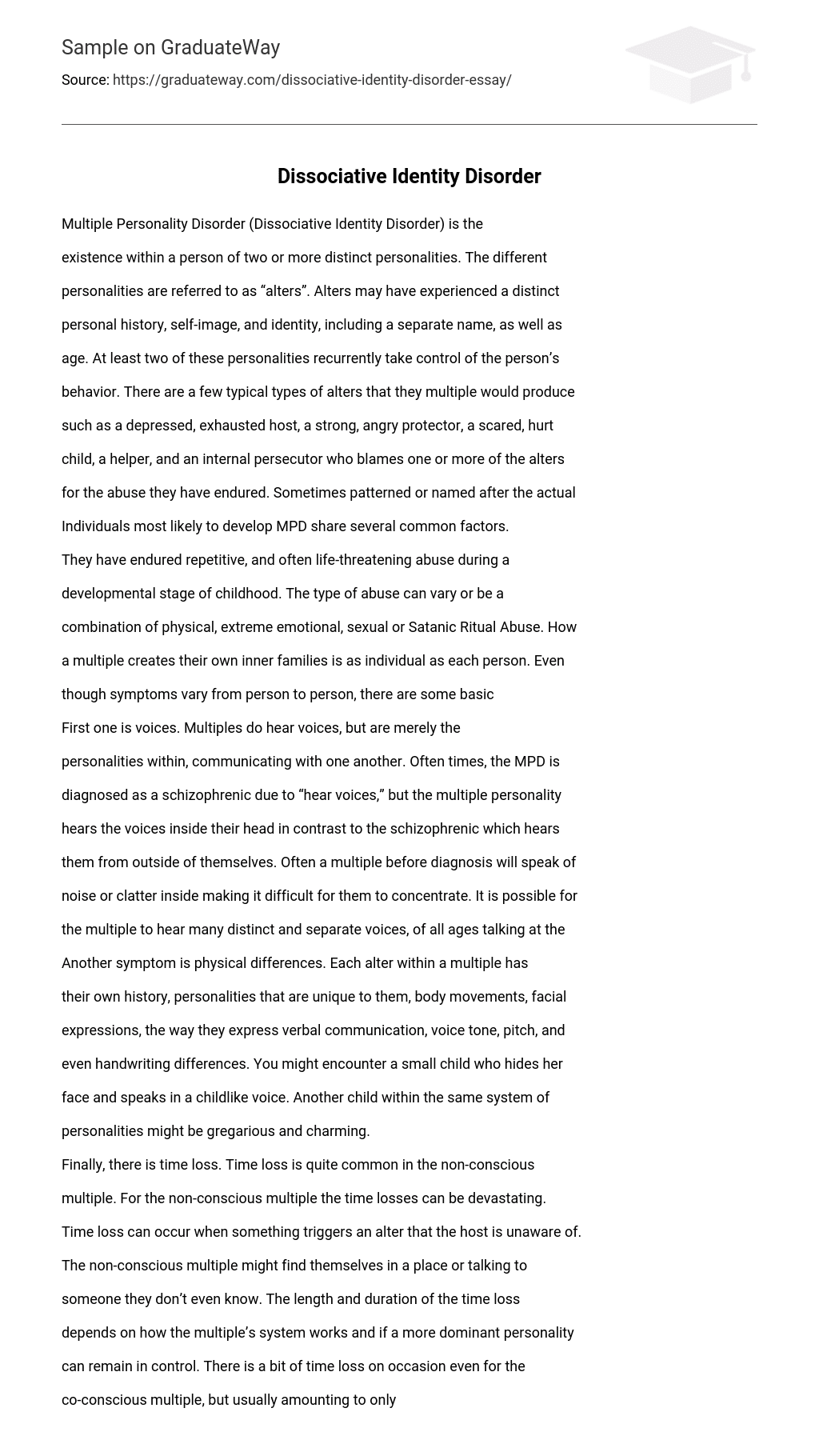Multiple Personality Disorder (Dissociative Identity Disorder) is the existence within a person of two or more distinct personalities. The different personalities are referred to as “alters”. Alters may have experienced a distinct personal history, self-image, and identity, including a separate name, as well as age. At least two of these personalities recurrently take control of the person’s behavior. There are a few typical types of alters that they multiple would produce such as a depressed, exhausted host, a strong, angry protector, a scared, hurt child, a helper, and an internal persecutor who blames one or more of the alters for the abuse they have endured. Sometimes patterned or named after the actual
Individuals most likely to develop MPD share several common factors. They have endured repetitive, and often life-threatening abuse during a developmental stage of childhood. The type of abuse can vary or be a combination of physical, extreme emotional, sexual or Satanic Ritual Abuse. How a multiple creates their own inner families is as individual as each person. Even though symptoms vary from person to person, there are some basic.
First one is voiced. Multiples do hear voices, but are merely the personalities within, communicating with one another. Often times, the MPD is diagnosed as a schizophrenic due to “hear voices,” but the multiple personality hear the voices inside their head in contrast to the schizophrenic which hears them from outside of themselves. Often a multiple before diagnosis will speak of noise or clatter inside, making it difficult for them to concentrate. It is possible for the multiple to hear many distinct and separate voices, of all ages talking at the
Another symptom is physical differences. Each alter within a multiple has their own history, personalities that are unique to them, body movements, facial expressions, the way they express verbal communication, voice tone, pitch, and even handwriting differences. You might encounter a small child who hides her face and speaks in a childlike voice. Another child within the same system of personalities might be gregarious and charming.
Finally, there is time loss. Time loss is quite common in the non-conscious multiple. For the non-conscious multiple the time losses can be devastating. Time loss can occur when something triggers an alter that the host is unaware of. The non-conscious multiple might find themselves in a place or talking to someone they don’t even know. The length and duration of the time loss depend on how the multiple’s system works and if a more dominant personality can remain in control. There is a bit of time loss on occasion even for the co-conscious multiple, but usually amounting to only brief periods. Multiples, as well as those who deal with them, come to recognize different alters as completely separate people, rather than just different aspects of the same person.
The different personalities usually have different names, ages, gender, likes and dislikes. Certain alters may have physical or mental abilities that the others do not possess. Often there is a difference in body language, speech and mannerisms. Some multiples have an alter that changes the color of the eyes, while others have been known to have one alter with cancer, diabetes, etc., while all the other alters remain healthy or have their own ailments. While most multiples have alters who are very similar to one another, the difference can be so minute, that at times, even the multiples themselves might have a difficult.





